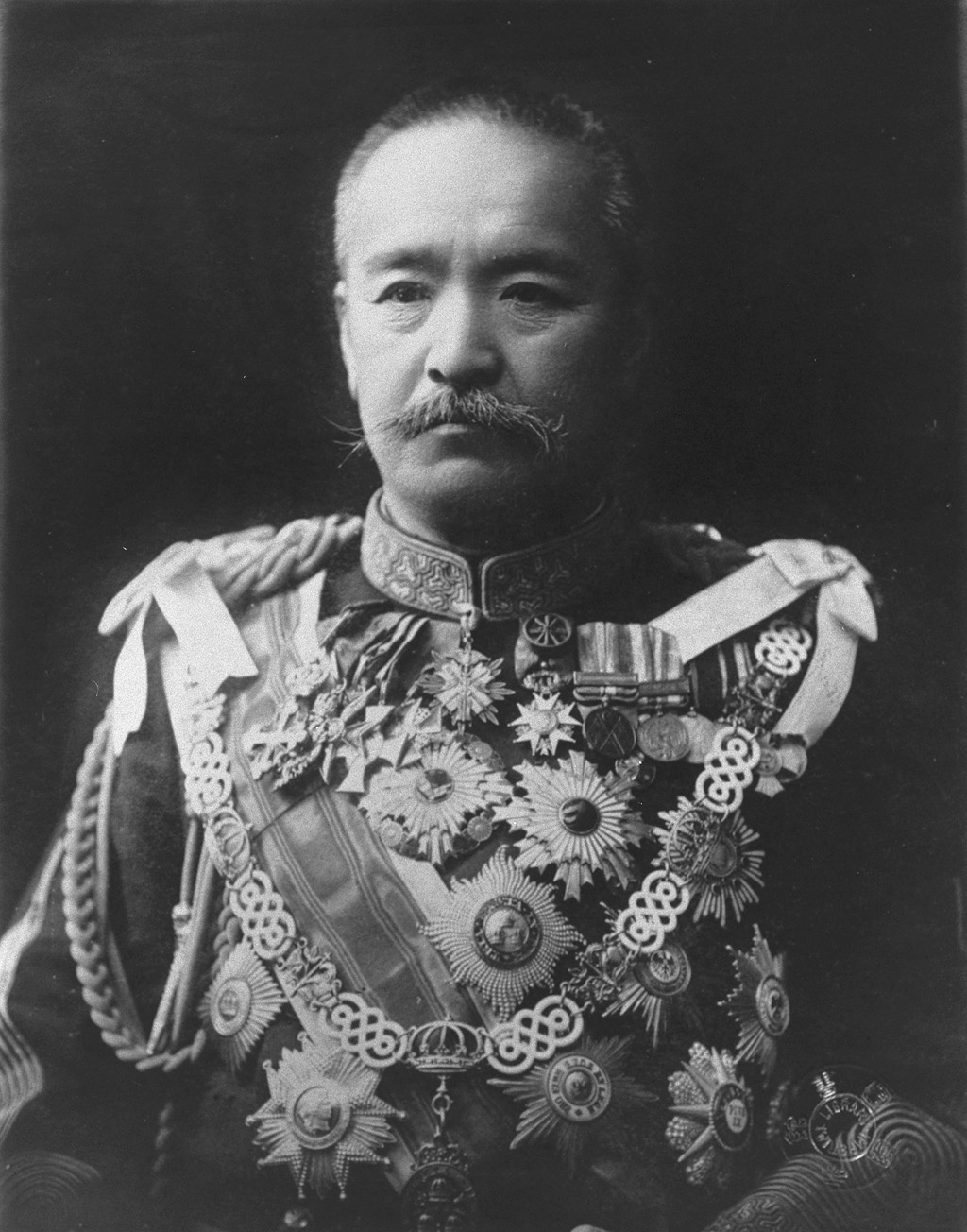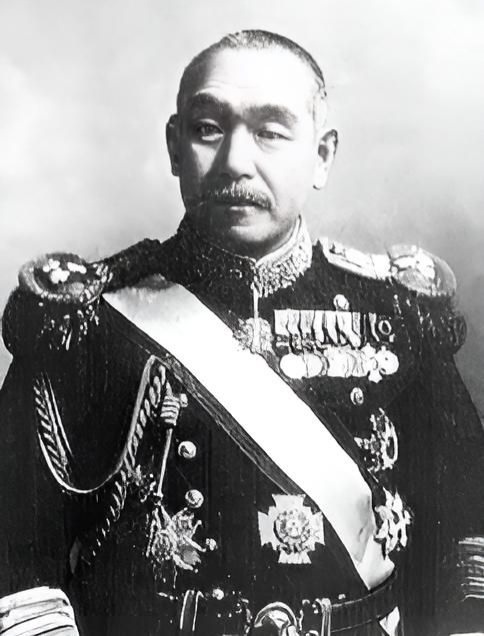Jij┼л on:
[Wikipedia]
[Google]
[Amazon]
 The is a department of the
The is a department of the

 This is a list of grand chamberlains after the
This is a list of grand chamberlains after the
Imperial Household Agency , Board of the Chamberlains
{{Authority control Imperial Household Agency
 The is a department of the
The is a department of the Imperial Household Agency
The (IHA) is an agency of the government of Japan in charge of state matters concerning the Imperial House of Japan, Imperial Family, and the keeping of the Privy Seal of Japan, Privy Seal and State Seal of Japan. From around the 8th century ...
of Japan.
History
According toTaih┼Н Code
The was an administrative reorganisation enacted in 703 in Japan, at the end of the Asuka period. It was historically one of the . It was compiled at the direction of Prince Osakabe, Fujiwara no Fuhito and Awata no Mahito. Nussbaum, Louis- ...
around the 8th century, it was presupposed that a chamberlain belonged to the Ministry of the Center. When the was installed during the Heian era
The is the last division of classical Japanese history, running from 794 to 1185. It followed the Nara period, beginning when the 50th emperor, Emperor Kammu, moved the capital of Japan to Heian-ky┼Н (modern Kyoto). means in Japanese. It is a ...
, the chamberlain's role was quickly reduced, limited to matters of courtesy. In 1869, the chamberlain was brought into the Imperial Household Ministry. The position of Grand Chamberlain was placed within the merit system in 1871, and three peopleтАФTokudaiji Sanetsune
Prince was a Japanese courtier who served as Lord Keeper of the Privy Seal of Japan from 1891 to 1912 during the Meiji era.
Life
Tokudaiji Sanetsune was born to a branch of the Fujiwara court nobility in Kyoto. His father was Tokudaiji Ki ...
, Masataka Kawase, and Higashikuze Michitomi
Count was a Japanese noble and statesman of the late Edo period and early Meiji period.
He was among the pro-Emperor ''sonn┼Н j┼Нi'' faction nobles who escaped to Ch┼Нsh┼л Domain after members of the pro-shogunate ''k┼Нbu gattai'' faction stag ...
тАФwere appointed. According to the Imperial Household Ministry regulations, the Grand Chamberlain supervises chamberlains who closely attend to the appointed person, report to that person, and announce their orders.
After World War II
World War II or the Second World War (1 September 1939 тАУ 2 September 1945) was a World war, global conflict between two coalitions: the Allies of World War II, Allies and the Axis powers. World War II by country, Nearly all of the wo ...
, the chamberlains were organized into the Board of the Chamberlains, within the Imperial Household Agency, through the temporary . After the passage of the National Public Service Law (Sh┼Нwa 22 Law No. 120), the chamberlain became a special service national public servant. Although distinctions between first-class officials, second-class officials, and so forth continued, the class publication of an appointment document would no longer be carried out after the 2001 Central Government Reform
The by the Japanese government involved the establishment of a new ministry, the merging of existing ministries and the abolition of others. This resulted in little more than a change of ministry names (with the exception of the Environment Agen ...
.
Organisation
The is a chief functionary of the Imperial court and aide of theEmperor of Japan
The emperor of Japan is the hereditary monarch and head of state of Japan. The emperor is defined by the Constitution of Japan as the symbol of the Japanese state and the unity of the Japanese people, his position deriving from "the will of ...
. He also keeps the Privy Seal and the State Seal and has been an official civil servant since the Meiji Period
The was an era of Japanese history that extended from October 23, 1868, to July 30, 1912. The Meiji era was the first half of the Empire of Japan, when the Japanese people moved from being an isolated feudal society at risk of colonizatio ...
. Today, the Grand Chamberlain, assisted by a Vice-Grand Chamberlain, heads the Board of the Chamberlains.
The Grand Chamberlain's position is that of an attestation official ( шкНши╝хоШ ''Ninsh┼Нkan''), i.e. his appointment and dismissal are at the discretion of the Emperor.
Crown Prince
The Crown Prince of Japan is also served by a chamberlain. This official is called because the Crown Prince lives in the T┼Нg┼л Palace ("East Palace"). The Grand Master is the head of the Board of the Crown Prince's Household.Grand Chamberlains

 This is a list of grand chamberlains after the
This is a list of grand chamberlains after the Meiji period
The was an era of Japanese history that extended from October 23, 1868, to July 30, 1912. The Meiji era was the first half of the Empire of Japan, when the Japanese people moved from being an isolated feudal society at risk of colonizatio ...
:
* Prince Tokudaiji Sanetsune
Prince was a Japanese courtier who served as Lord Keeper of the Privy Seal of Japan from 1891 to 1912 during the Meiji era.
Life
Tokudaiji Sanetsune was born to a branch of the Fujiwara court nobility in Kyoto. His father was Tokudaiji Ki ...
( х╛│хдзхп║хоЯхЙЗ), 1871тАУ77
* Viscount Kawase Masataka ( ц▓│чАмчЬЯхнЭ), 1871тАУ73
* Count Higashikuze Michitomi
Count was a Japanese noble and statesman of the late Edo period and early Meiji period.
He was among the pro-Emperor ''sonn┼Н j┼Нi'' faction nobles who escaped to Ch┼Нsh┼л Domain after members of the pro-shogunate ''k┼Нbu gattai'' faction stag ...
( цЭ▒ф╣Еф╕ЦщАЪчжз), 1871тАУ77
* Yamaguchi Tadasada
Yamaguchi Tadasada () (October 18, 1843 тАУ March 21, 1902) was an Imperial Japanese Navy veteran of the Boshin War and Meiji-era Japanese politician. He was the second governor of Ibaraki Prefecture (1872). He was Grand Chamberlain of Japan (1878 ...
( х▒▒хПгцнгхоЪ), 1878тАУ84
* Yoneda Torao ( ч▒│чФ░шЩОщЫД), 1878тАУ84
* Prince Tokudaiji Sanetsune
Prince was a Japanese courtier who served as Lord Keeper of the Privy Seal of Japan from 1891 to 1912 during the Meiji era.
Life
Tokudaiji Sanetsune was born to a branch of the Fujiwara court nobility in Kyoto. His father was Tokudaiji Ki ...
( х╛│хдзхп║хоЯхЙЗ), 1884тАУ12
* Baron Hatano Norinao ( ц│вхдЪщЗОцХмчЫ┤), 1912
* Prince Katsura Tar┼Н ( цбВхдкщГО), 1912
* Prince Takatsukasa Hiromichi ( щ╖╣хП╕чЕХщАЪ), 1912тАУ18
* Count Ogimachi Sanemasa
┼Мgimachi Sanemasa () (July 20, 1855 тАУ June 26, 1923) was a Japanese pharmacist and politician. He was Grand Chamberlain of Japan (1919тАУ1922). He was the 10th governor of Saitama Prefecture (1899тАУ1900). He was a recipient of the Order of t ...
( цнгшжкчФ║хоЯцнг), 1919тАУ22
* Count Tokugawa Satotaka ( х╛│х╖ЭщБФхнЭ), 1922тАУ27
* Count Chinda Sutemi ( чПНчФ░цНих╖│), 1927тАУ1929
* Baron Suzuki Kantar┼Н ( щИ┤цЬиш▓лхдкщГО), 1929тАУ36
* Hyakutake Sabur┼Н ( чЩ╛цнжф╕ЙщГО), 1936тАУ44
* Fujita Hisanori ( шЧдчФ░х░Ъх╛│), 1944тАУ47
After enforcement of the Constitution of Japan
The Constitution of Japan is the supreme law of Japan. Written primarily by American civilian officials during the occupation of Japan after World War II, it was adopted on 3 November 1946 and came into effect on 3 May 1947, succeeding the Meij ...
by the end of World War II:
* ┼Мgane Masujir┼Н ( хдзщЗСчЫКцмбщГО), 1947тАУ48
* Mitani Takanobu ( ф╕Йш░╖щЪЖф┐б), 1948тАУ65
* Inada Sy┼лichi ( чи▓чФ░хСиф╕А), 1965тАУ69
* Irie Sukemasa
was a Japanese essayist.
Life
A second cousin of the Sh┼Нwa Emperor, Irie was born in Tokyo. He was a graduate of the University of Tokyo. He was Grand Chamberlain of Japan (1969тАУ1985). He was a recipient of the Order of the Rising Sun and the ...
( хЕец▒ЯчЫ╕цФ┐), 1969тАУ85
* Tokugawa Yoshihiro ( х╛│х╖Эч╛йхпЫ), 1985тАУ88
* Yamamoto Satoru ( х▒▒цЬмцВЯ), 1988тАУ96
* Watanabe Makoto ( ц╕бщВЙхЕБ, 12 December 1996 тАУ 2007
* Kawashima Yutaka ( х╖Эх│╢шгХ), 2007тАУ2015
* Kawai Chikao ( ц▓│чЫ╕хСихдл), 2015тАУ2019
* Odano Nobutake ( х░ПчФ░щЗОх▒Хф╕И), 2019тАУ2021
* Bessho Koro ( хИецЙАц╡йщГО), 2021тАУpresent
See also
* Aide-de-camp to the Emperor of Japan * Grand Steward's Secretariat * Board of CeremoniesReferences
External links
Imperial Household Agency , Board of the Chamberlains
{{Authority control Imperial Household Agency